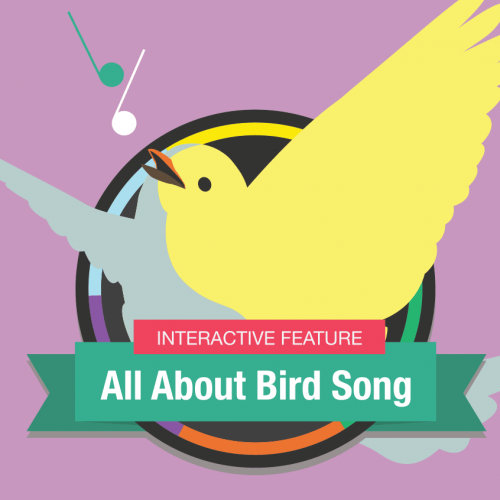

This leads into the next resource, the Macaulay Library, a collection that includes audio recordings (with sonagrams) of birds and other natural sounds.It is so much easier to go out in your backyard and record a song that’s never been recorded before than it is to go out in your backyard and take a photograph that’s never been photographed before of a bird.” Here’s an inspiring quote from the presentation: “One of the reasons I got into bird sounds is because with bird sounds we are so much closer to the frontier of bird knowledge than we are when we just look at them. Nathan Pieplow, author of the previous resource, also presented an excellent webinar at the Cornell Lab with some really fascinating insights on the vocalizations of Red-winged Blackbirds and more.The guide’s recordings (with sonagrams) are available online for free, and these are a really amazing resource.
#ALL ABOUT BIRDS SOUNDS HOW TO#
This book is packed with information: an intro section on how to read sonagrams, an index for looking up unknown vocalizations based on the pattern of a sound you’ve heard, and the core of the book with multiple types of vocalizations for most species. Moving beyond just warblers, Nathan Pieplow’s 2017 book, the Peterson Field Guide to Bird Sounds of Eastern North America provides sonagram coverage for everything from the chattiest of birds to the infrequently heard Turkey Vulture.

Audio files (compatible with iTunes) for each sonagram in the book are available for purchase (independent of the book). For example, I’ll give the book credit for helping me get an especially memorable sighting of a Blackburnian Warbler last spring, as I had the pleasure of watching as it bathe in our stream. While I may never master all warbler songs, I really value this resource for how it has helped me maximize my ability to see my favorite birds. I especially love the page layouts of sonagrams these highlight aspects of songs that differentiate them from other similar singers. This book pointed out quite a number of clues to teasing out differences that I had overlooked. Prior to this book, and on the basis of the songs I heard at All About Birds, I had a mental framework of groups of warblers that were “worth looking at” but that I thought I had no hope of identifying to species except by sight. After checking it out of the library (twice), I decided I needed to buy a copy because of the excellent treatment of warbler song.
#ALL ABOUT BIRDS SOUNDS FREE#
Smartphone owners seem to always have bird song at their fingertips with apps such as the free Audubon Bird Guide App.It has a nice collection of songs and calls (though without sonagrams). The All About Birds website is the online source for bird vocalizations that I’ve been using the longest.Below, I’ve compiled a listing of resources that I’ve become aware of over the years if you have other favorite bird song resources, please feel free to share them with us. Eric & I have another reason to delve into available bird song resources this year: We will be presenting an “ Introduction to Bird Song” program on behalf of CAS at the library on July 12. Also, paying attention to bird sounds in the back yard can lead to interesting observations of behavior. Scientific study of bird vocalizations is leading to better understanding of bird behavior and evolution. Spring migration is a great season to brush up on bird song as a tool for identification, but vocalizations are fascinating for more than just ID.


 0 kommentar(er)
0 kommentar(er)
